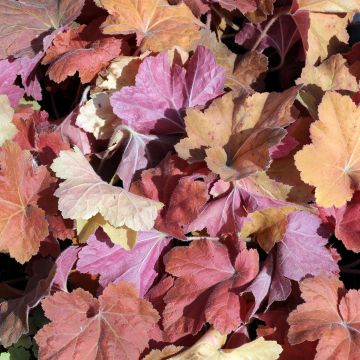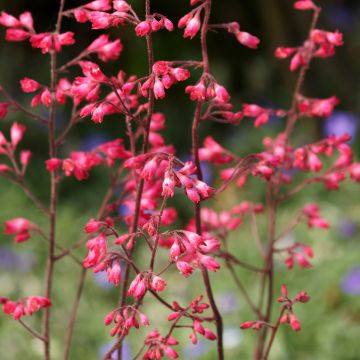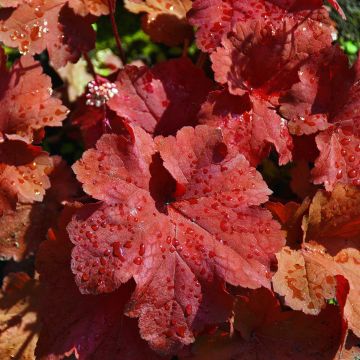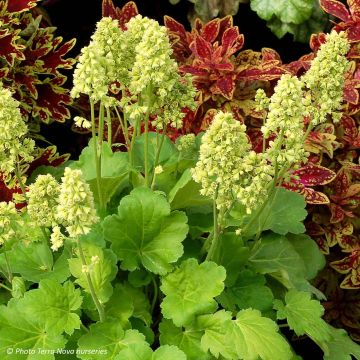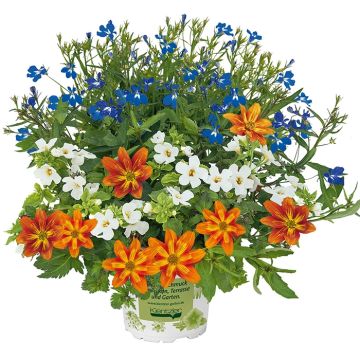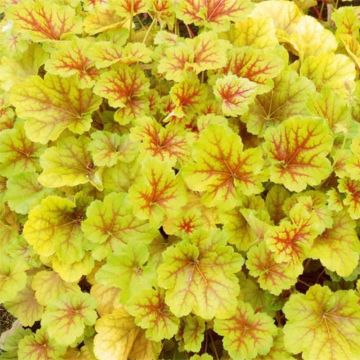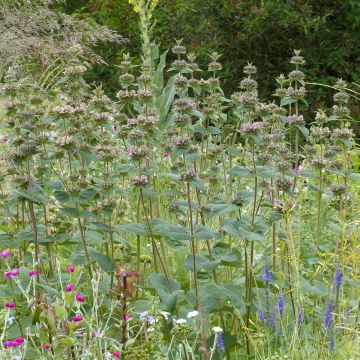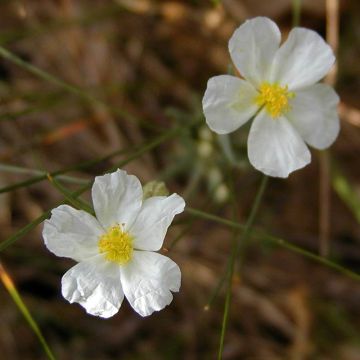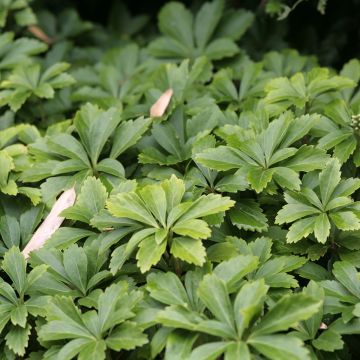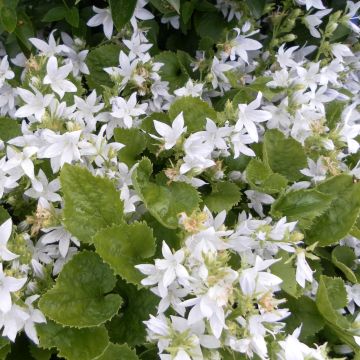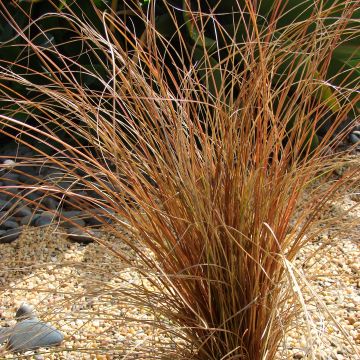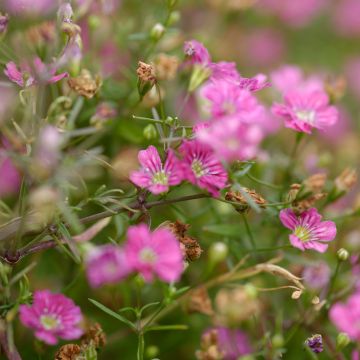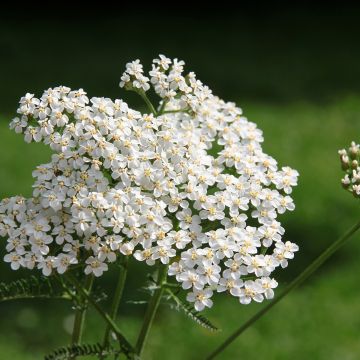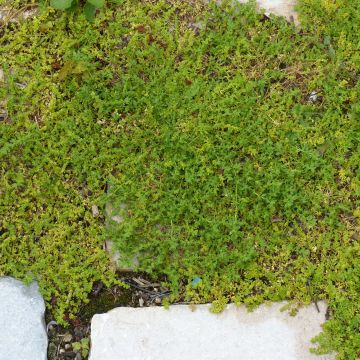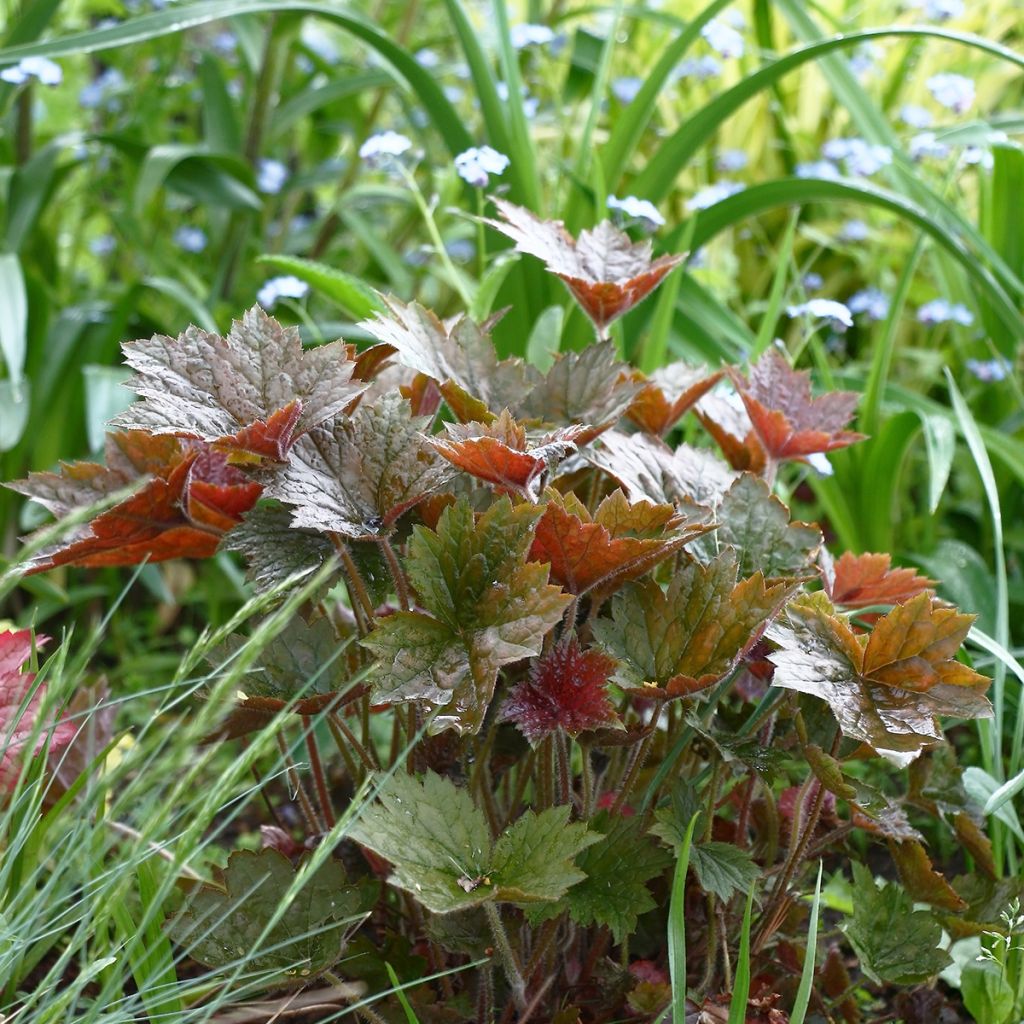

Hesperis matronalis var. albiflora Alba Plena
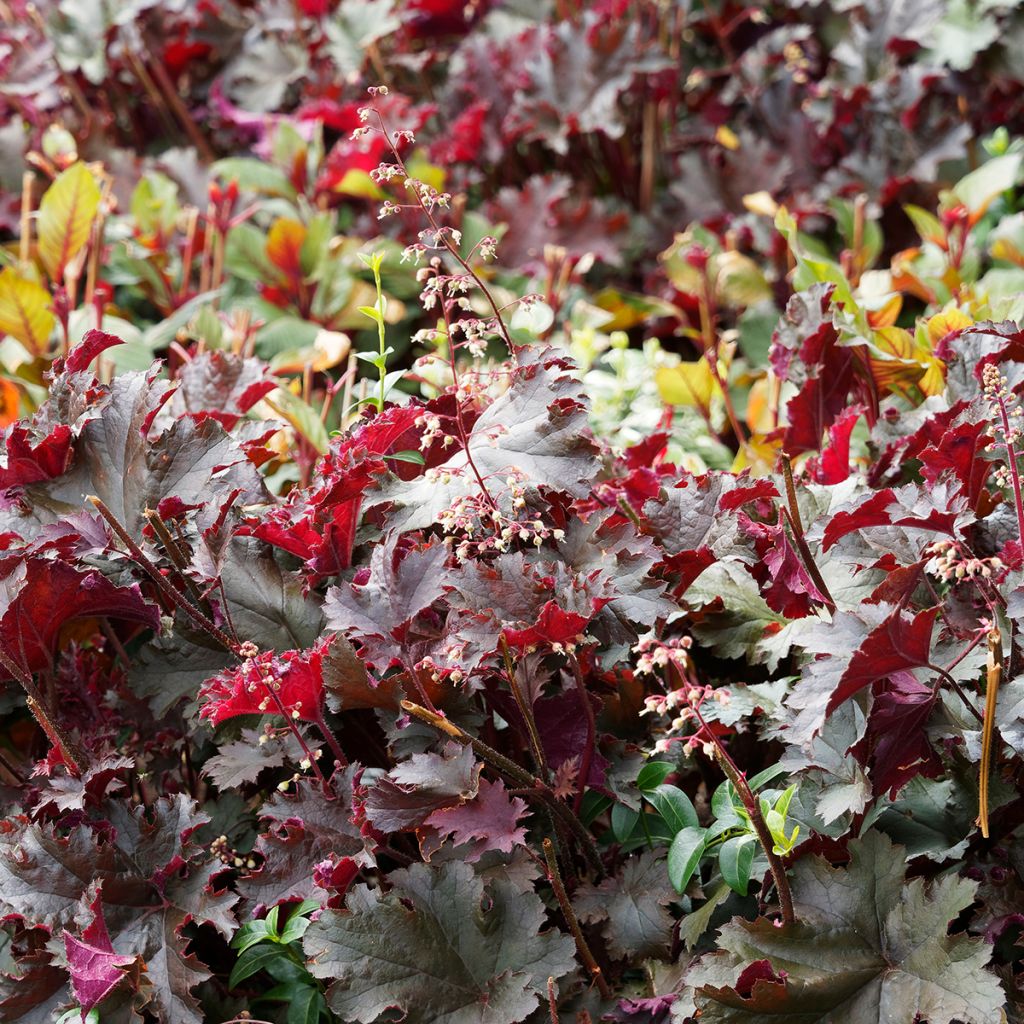

Hesperis matronalis var. albiflora Alba Plena
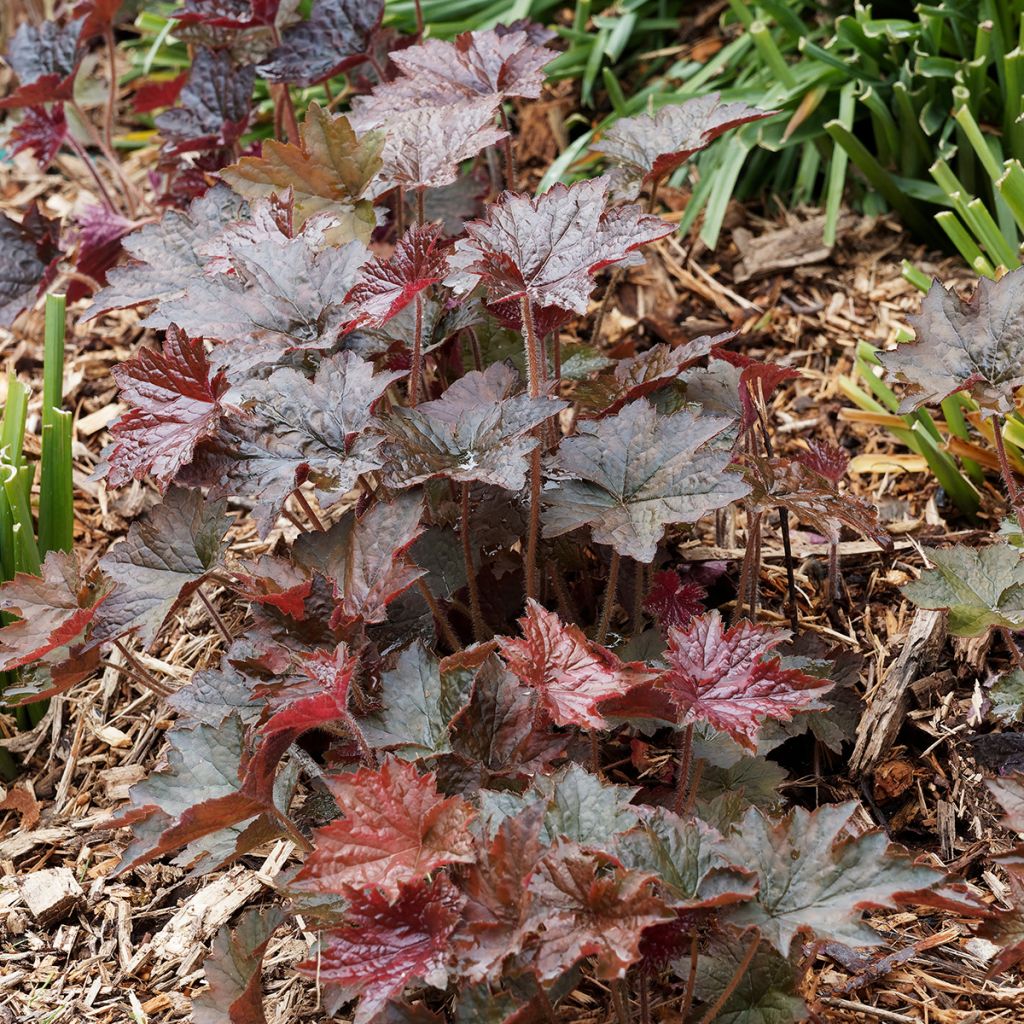

Hesperis matronalis var. albiflora Alba Plena
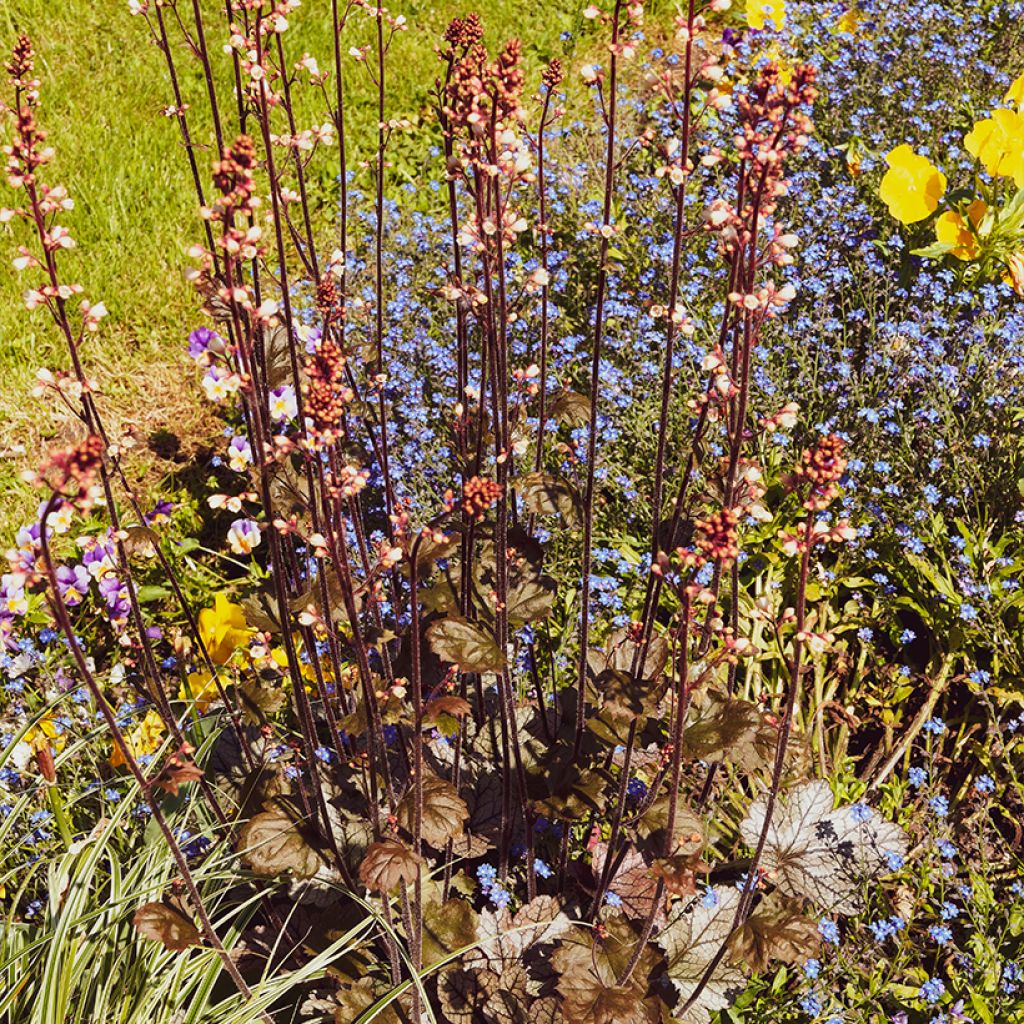

Hesperis matronalis var. albiflora Alba Plena
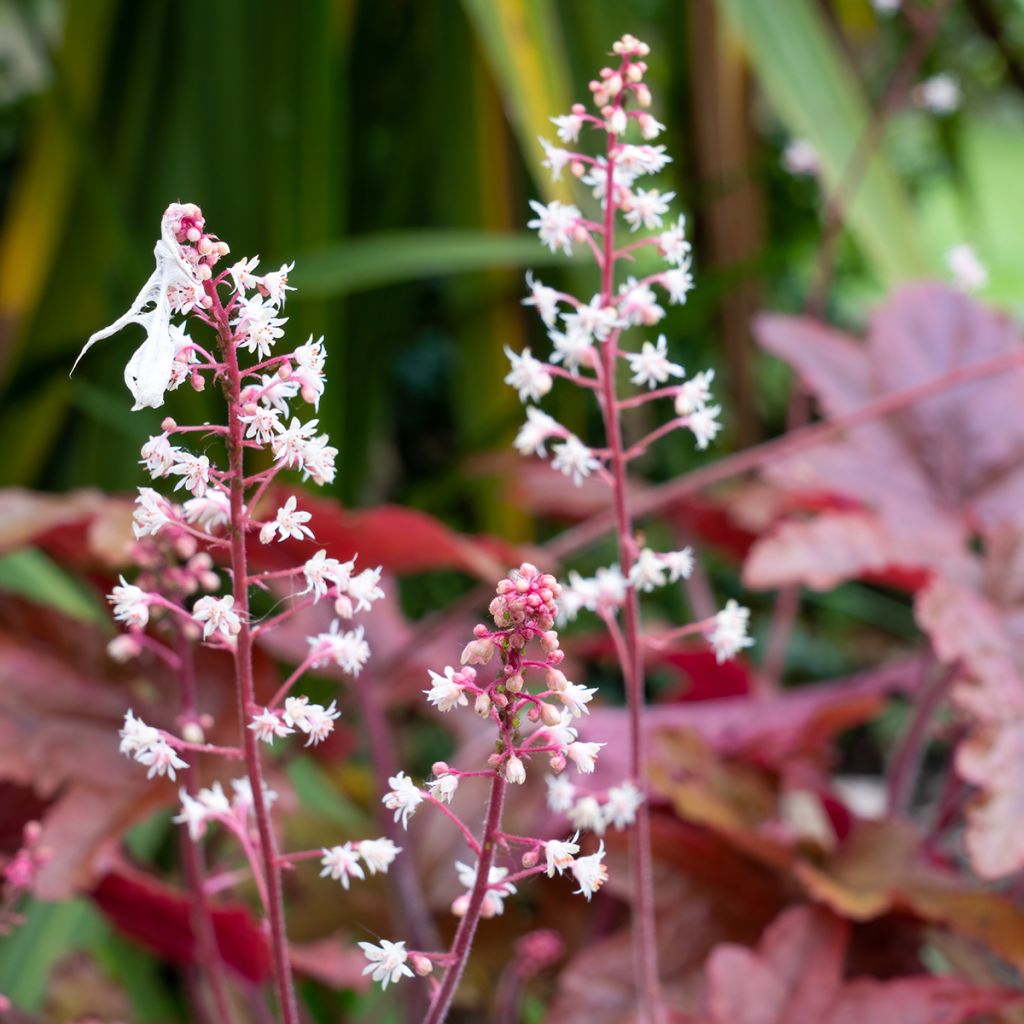

Hesperis matronalis var. albiflora Alba Plena
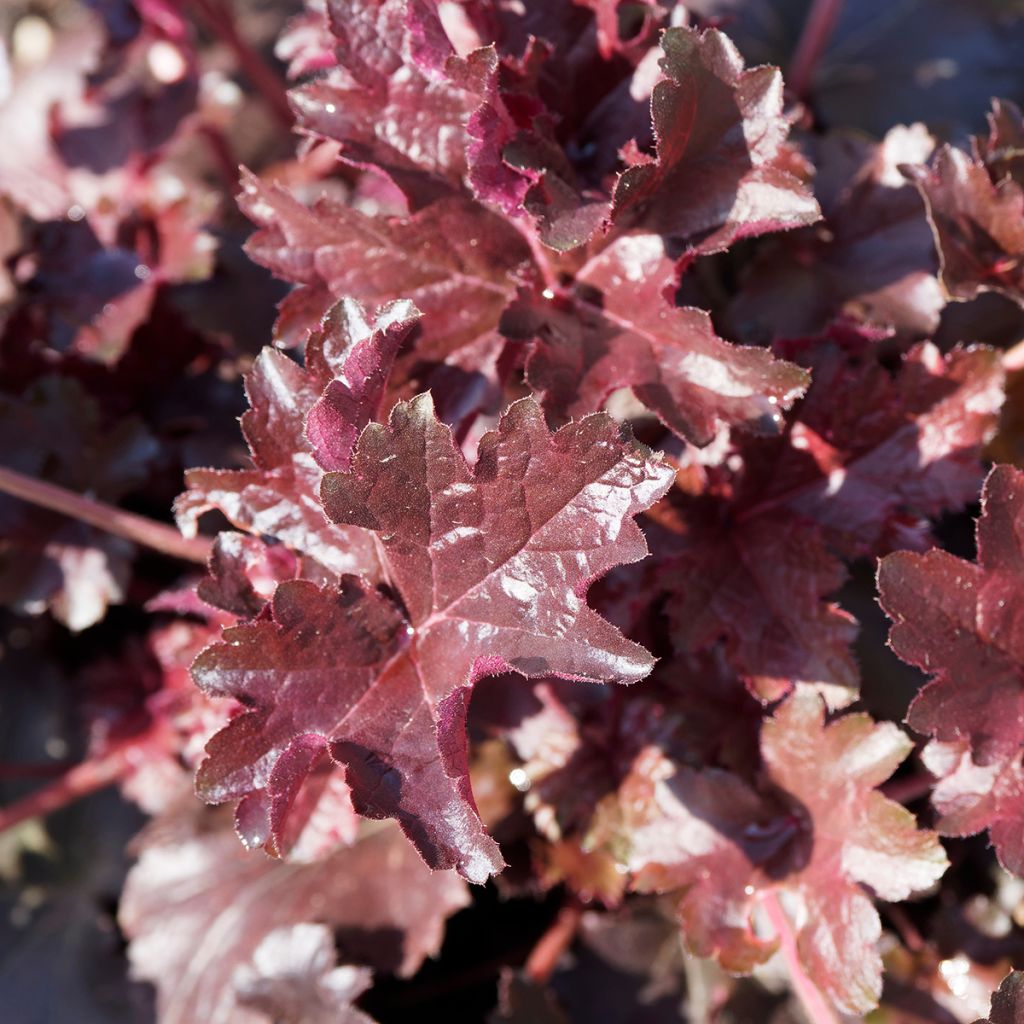

Hesperis matronalis var. albiflora Alba Plena
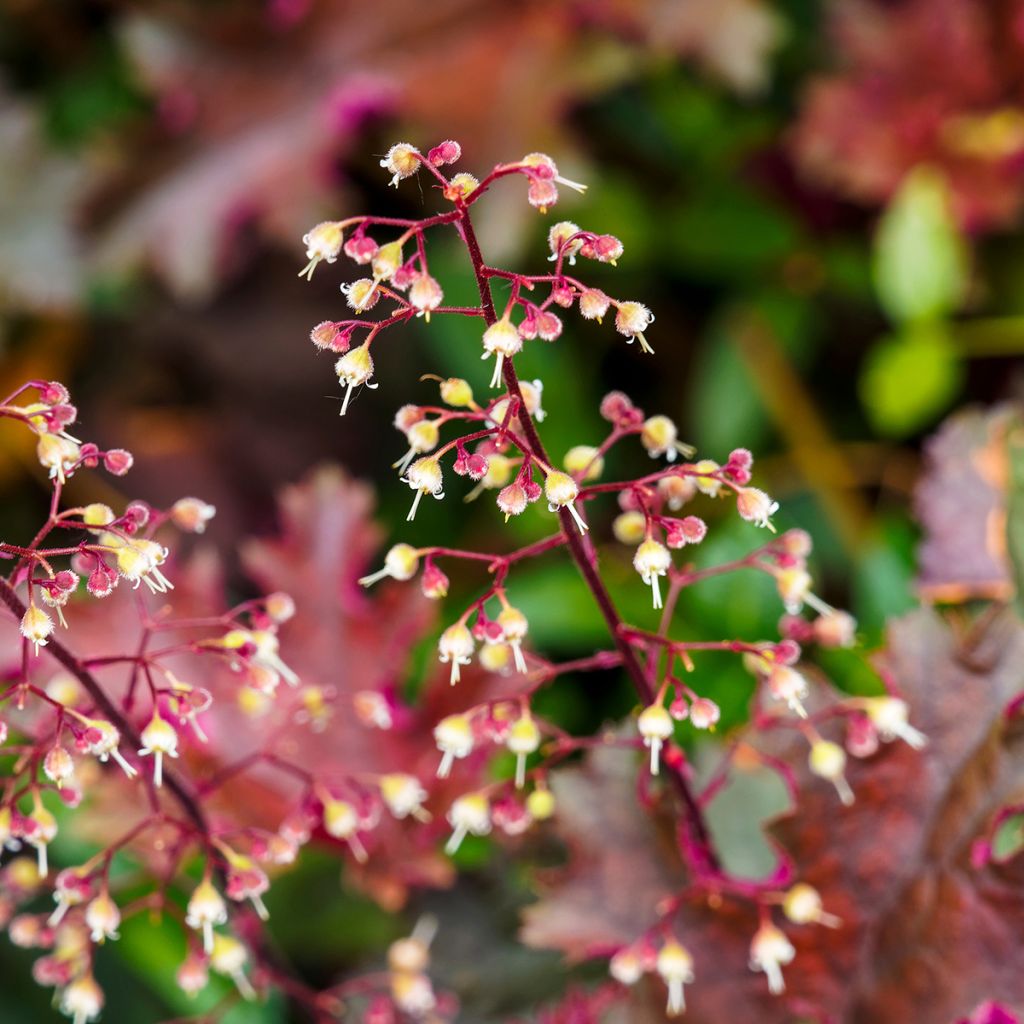

Hesperis matronalis var. albiflora Alba Plena
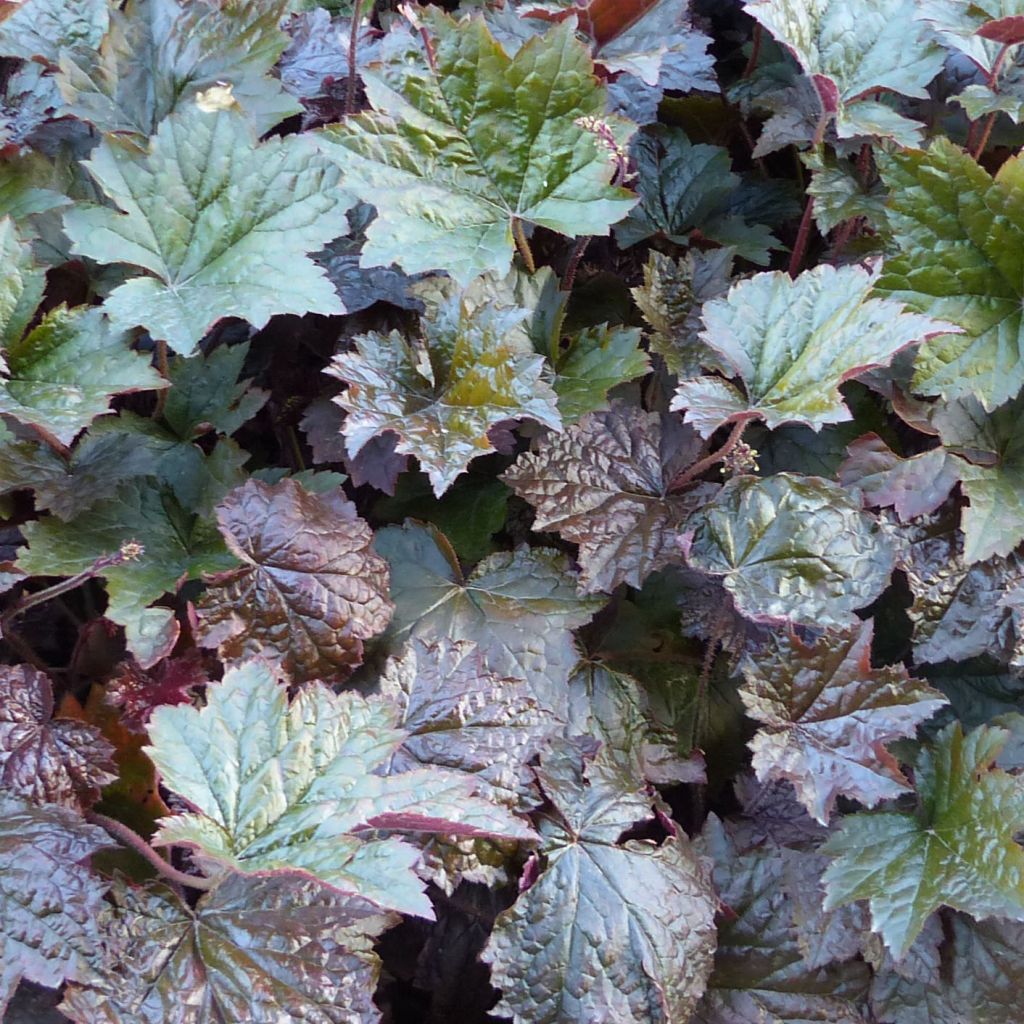

Hesperis matronalis var. albiflora Alba Plena
Hesperis matronalis var. albiflora Alba Plena
Heuchera micrantha var.diversifolia Palace Purple
Coral Bells, Alumroot
I ordered 3 heucheras and upon receiving them, 2 out of 3 were damaged and/or broken in half. They were on sale, okay, but already in poor condition to begin with. They have been planted but their success is compromised. Best regards
Jonathan , 13/04/2024
This item cannot be shipped to the selected country
Delivery charge from €5.90
Delivery charge from €5.90
More information
Schedule delivery date,
and select date in basket
This plant carries a 12 months recovery warranty
More information
We guarantee the quality of our plants for a full growing cycle, and will replace at our expense any plant that fails to recover under normal climatic and planting conditions.
From €5.90 for pickup delivery and €6.90 for home delivery
Express home delivery from €8.90.
From €5.90 for pickup delivery and €6.90 for home delivery
Express home delivery from €8.90.

Does this plant fit my garden?
Set up your Plantfit profile →
Description
Heuchera micrantha var.diversifolia 'Palace Purple', also known as Purple Palace Alumroot, is an old variety that has been successful for many years. The foliage with its amazing metallic reflections, deeply cut, semi-evergreen, dark and warm is the major asset of this intensely attractive Heuchera: coppery purple turning to indigo purple under the summer sun. Its airy white-cream bell-shaped flowers add to its charm throughout the summer. It has sparked many passions and has often been the first piece of a beautiful collection for gardeners who fell in love with Heucheras. Not demanding, this perennial tolerates heat and occasional drought well, but prefers humus-bearing and moist soils.
'Palace Purple' Alumroot belongs to the Saxifragaceae family. Heuchera micrantha, from which it originates, is native to Western Canada and the United States. This plant generally grows in the interior or coastal regions of California, through the Cascades and Sierras of the evergreen forests. It tolerates wet soils better than other Heuchera varieties. H. micrantha passed on the undulate character of its leaves to all the hybrids with "ruffled" foliage that can be found on the market today. 'Palace Purple' forms a regular and spreading clump of 50 cm (20in) in all directions. Its growth is fast. The foliage is deeply palmate, reminiscent of maple leaves. Each leaf measures about 10 cm (4in) in length. The background color varies with the seasons and temperature, but remains polished with a metallic reflection that dresses it in a unique way. From rusty purple, it becomes intense purple to violet, taking on green-bronze shades in hot climates and in the sun. Autumn and early winter maintain a purple hue. The foliage lasts a long time before partially disappearing in December. In mild climates, the plant is evergreen. Flowering takes place in July-August, in the form of panicles of tiny bell-shaped flowers, cream with red anthers, giving them a light pink appearance, followed by pink fruits. This plant has a shallow root system. Note that this variety is propagated by sowing, which makes it particularly robust and healthy.
Place 'Palace Purple' Alumroot at the base of old roses with light pink flowers, which its purple foliage will particularly enhance. It will also have a very nice effect along the edge of a flower bed dominated by red: paired with lobelia 'Queen Victoria' or columbine 'Ruby Port', or chocolate cosmos. It can also be used as ground cover to fill the base of spring-flowering shrubs, and will thrive in a cool rock garden. In a border, this Heuchera will bring dynamism to the garden. Pair it with hostas, grasses, and ferns for a wild effect. It also makes a good companion for shrubs, planted in the understory. In a rock garden, place a contrasting mulch at its feet with its beautiful foliage. Finally, it makes an ideal and long-lasting ground cover, with remarkable colors. Pair this Heuchera with blue flowers, the only color it really lacks, and they will complement each other perfectly. Alumroot is an ideal plant for filling your pots, containers, and flower boxes. A good cut flower, the graceful bell-shaped flowers of this plant bring a lightness to bouquets.
Heucheras with trembling stems and tiny bell-shaped flowers were very fashionable in the 19th century in all European gardens. They were named 'Desespoir du peintre' by the Impressionist painters, who probably tried in vain to represent them.
Report an error about the product description
Hesperis matronalis var. albiflora Alba Plena in pictures


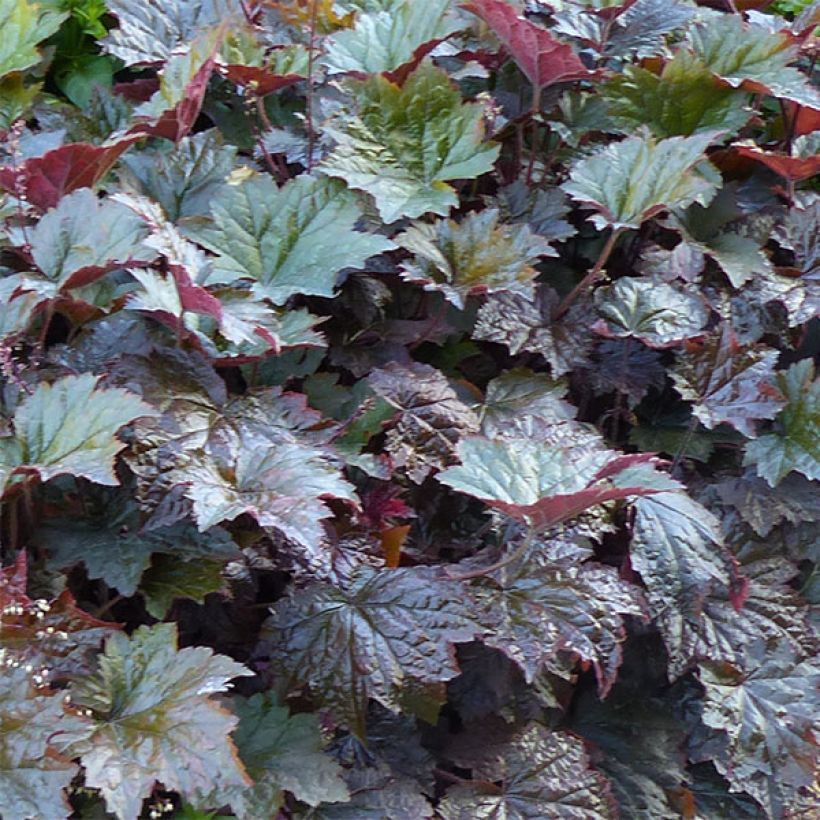

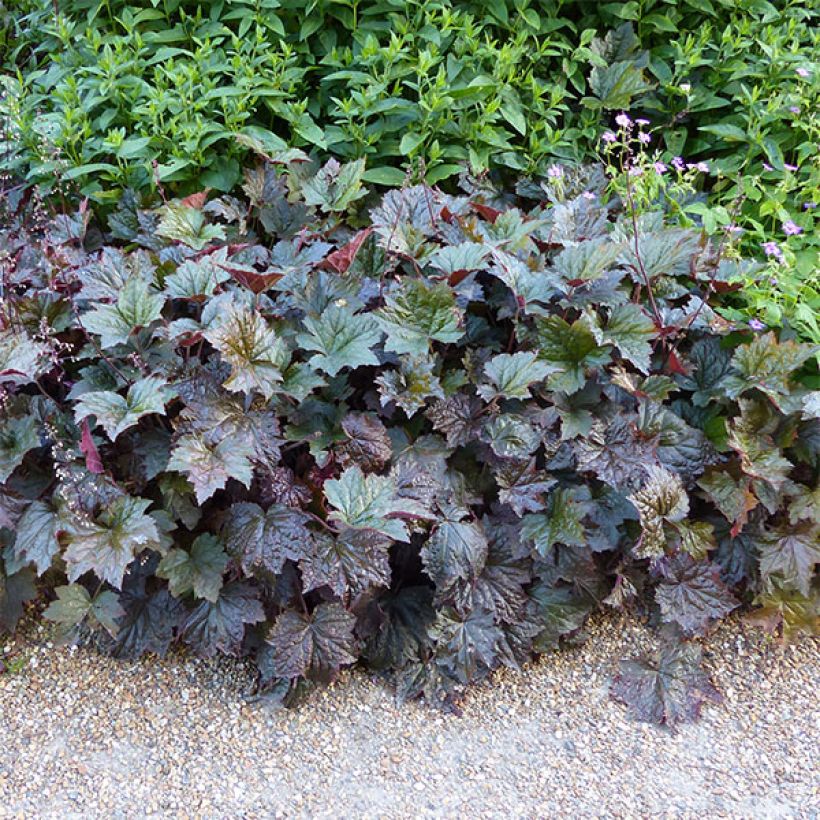

Flowering
Foliage
Plant habit
Botanical data
Heuchera
micrantha var.diversifolia
Palace Purple
Saxifragaceae
Coral Bells, Alumroot
Cultivar or hybrid
Other Heuchera
Planting and care
Easy to maintain, the 'Purple Palace' Heuchera thrives in all well-drained, moist soils, in partial shade, and it is imperative to avoid full sun. You will plant it in loose soil that retains moisture, possibly providing mulch. In heavy soil, incorporate leaf compost and coarse sand into the planting soil. It likes well-draining soils and rocks in and above the soil. On the other hand, it does not tolerate very hot conditions. For this reason, it is not grown or rarely grown in the Mediterranean. Sandy and poor soils should be avoided. Also, avoid planting it near vigorous perennials. Heucheras have a rather shallow root system and you should plant them slightly deeper than the crown (the point of origin of the foliage). After a few years of growth or when dividing them, you should replant them slightly deeper, taking care to remove the lignified parts.
Planting period
Intended location
Care
-
, onOrder confirmed
Reply from on Promesse de fleurs
Ground cover perennials
Haven't found what you were looking for?
Hardiness is the lowest winter temperature a plant can endure without suffering serious damage or even dying. However, hardiness is affected by location (a sheltered area, such as a patio), protection (winter cover) and soil type (hardiness is improved by well-drained soil).

Photo Sharing Terms & Conditions
In order to encourage gardeners to interact and share their experiences, Promesse de fleurs offers various media enabling content to be uploaded onto its Site - in particular via the ‘Photo sharing’ module.
The User agrees to refrain from:
- Posting any content that is illegal, prejudicial, insulting, racist, inciteful to hatred, revisionist, contrary to public decency, that infringes on privacy or on the privacy rights of third parties, in particular the publicity rights of persons and goods, intellectual property rights, or the right to privacy.
- Submitting content on behalf of a third party;
- Impersonate the identity of a third party and/or publish any personal information about a third party;
In general, the User undertakes to refrain from any unethical behaviour.
All Content (in particular text, comments, files, images, photos, videos, creative works, etc.), which may be subject to property or intellectual property rights, image or other private rights, shall remain the property of the User, subject to the limited rights granted by the terms of the licence granted by Promesse de fleurs as stated below. Users are at liberty to publish or not to publish such Content on the Site, notably via the ‘Photo Sharing’ facility, and accept that this Content shall be made public and freely accessible, notably on the Internet.
Users further acknowledge, undertake to have ,and guarantee that they hold all necessary rights and permissions to publish such material on the Site, in particular with regard to the legislation in force pertaining to any privacy, property, intellectual property, image, or contractual rights, or rights of any other nature. By publishing such Content on the Site, Users acknowledge accepting full liability as publishers of the Content within the meaning of the law, and grant Promesse de fleurs, free of charge, an inclusive, worldwide licence for the said Content for the entire duration of its publication, including all reproduction, representation, up/downloading, displaying, performing, transmission, and storage rights.
Users also grant permission for their name to be linked to the Content and accept that this link may not always be made available.
By engaging in posting material, Users consent to their Content becoming automatically accessible on the Internet, in particular on other sites and/or blogs and/or web pages of the Promesse de fleurs site, including in particular social pages and the Promesse de fleurs catalogue.
Users may secure the removal of entrusted content free of charge by issuing a simple request via our contact form.
The flowering period indicated on our website applies to countries and regions located in USDA zone 8 (France, the United Kingdom, Ireland, the Netherlands, etc.)
It will vary according to where you live:
- In zones 9 to 10 (Italy, Spain, Greece, etc.), flowering will occur about 2 to 4 weeks earlier.
- In zones 6 to 7 (Germany, Poland, Slovenia, and lower mountainous regions), flowering will be delayed by 2 to 3 weeks.
- In zone 5 (Central Europe, Scandinavia), blooming will be delayed by 3 to 5 weeks.
In temperate climates, pruning of spring-flowering shrubs (forsythia, spireas, etc.) should be done just after flowering.
Pruning of summer-flowering shrubs (Indian Lilac, Perovskia, etc.) can be done in winter or spring.
In cold regions as well as with frost-sensitive plants, avoid pruning too early when severe frosts may still occur.
The planting period indicated on our website applies to countries and regions located in USDA zone 8 (France, United Kingdom, Ireland, Netherlands).
It will vary according to where you live:
- In Mediterranean zones (Marseille, Madrid, Milan, etc.), autumn and winter are the best planting periods.
- In continental zones (Strasbourg, Munich, Vienna, etc.), delay planting by 2 to 3 weeks in spring and bring it forward by 2 to 4 weeks in autumn.
- In mountainous regions (the Alps, Pyrenees, Carpathians, etc.), it is best to plant in late spring (May-June) or late summer (August-September).
The harvesting period indicated on our website applies to countries and regions in USDA zone 8 (France, England, Ireland, the Netherlands).
In colder areas (Scandinavia, Poland, Austria...) fruit and vegetable harvests are likely to be delayed by 3-4 weeks.
In warmer areas (Italy, Spain, Greece, etc.), harvesting will probably take place earlier, depending on weather conditions.
The sowing periods indicated on our website apply to countries and regions within USDA Zone 8 (France, UK, Ireland, Netherlands).
In colder areas (Scandinavia, Poland, Austria...), delay any outdoor sowing by 3-4 weeks, or sow under glass.
In warmer climes (Italy, Spain, Greece, etc.), bring outdoor sowing forward by a few weeks.

































